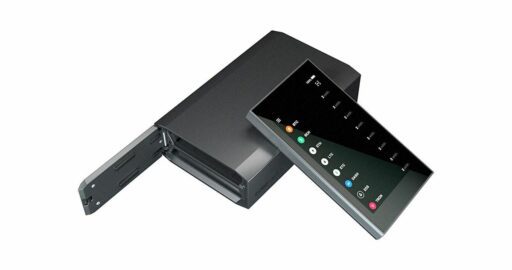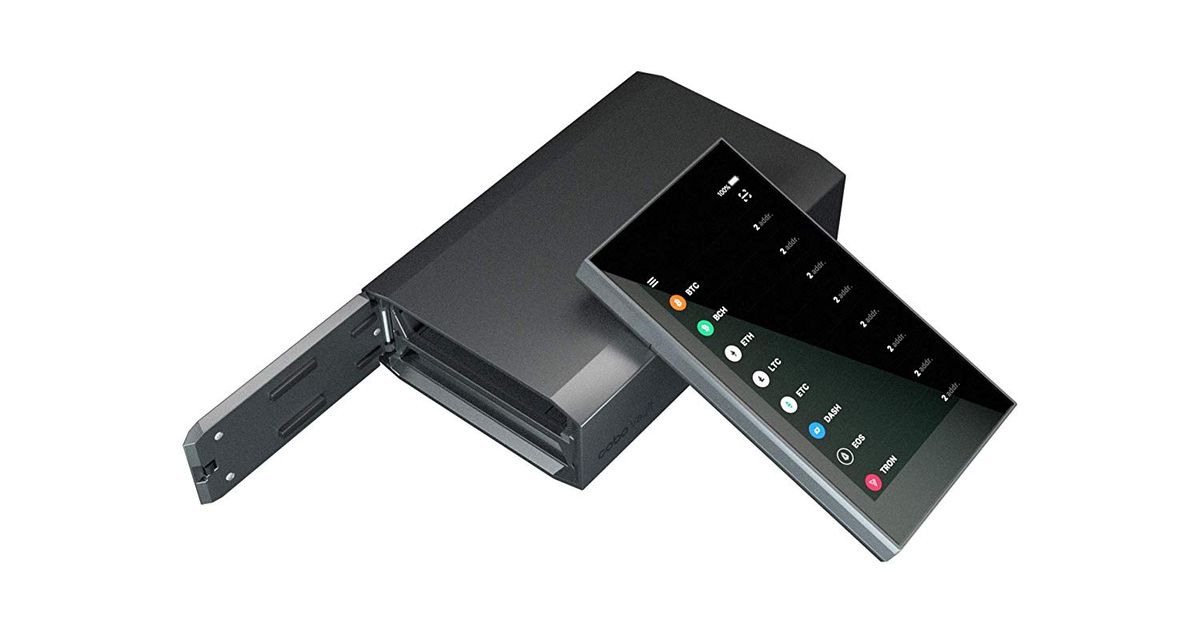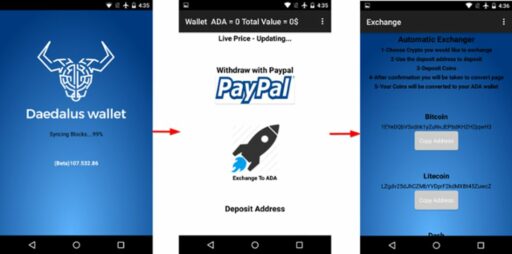In the ever-evolving landscape of cryptocurrency, securing digital assets is paramount. Offline crypto wallets, or cold wallets, offer a robust solution for those looking to safeguard their investments from online threats. This guide delves into the intricacies of offline wallets, covering types, setup, security practices, and future technological trends. Whether you’re a seasoned investor or new to the crypto scene, understanding how to effectively utilize offline wallets is crucial for digital asset protection.
Key Takeaways
- Offline crypto wallets, including hardware and paper wallets, provide superior security by storing digital assets away from online vulnerabilities.
- Setting up an offline wallet involves choosing the right type, securing private keys, transferring assets safely, and routine maintenance.
- Security best practices for offline wallets include safeguarding private keys, securing backup information, and preparing for physical theft or loss.
- While offline wallets offer enhanced security, they come with trade-offs such as higher costs and less convenience for frequent transactions.
- The future of offline wallet technology is promising, with innovations like biometric security and integration with decentralized finance on the horizon.
Understanding Offline Crypto Wallets: Types and Technologies

Defining Cold Wallets
A cold wallet is a type of cryptocurrency wallet that stores private keys in a secure offline environment. Unlike hot wallets, which are connected to the internet and more vulnerable to cyber-attacks, cold wallets are designed to provide an additional layer of security by being inaccessible to online threats.
- Hardware wallets are physical devices, often resembling USB drives, that store your private keys and can be disconnected from the internet.
- Paper wallets consist of printed information like private keys or QR codes, representing a simple and tangible way to hold crypto assets.
Cold wallets are the gold standard for securing digital assets, offering robust protection against unauthorized access and cyber threats.
While cold wallets are excellent for long-term storage, they may not be as convenient for those who need to access and trade their cryptocurrencies frequently. It’s important to weigh the security benefits against the potential inconvenience and to consider how often you’ll need to perform transactions when choosing a cold wallet.
Hardware Wallets: The Physical Safeguard
Hardware wallets are the bulwark of crypto security, providing a physical form of protection for digital currencies. These devices, often resembling USB drives, store private keys offline, significantly reducing the risk of hacking and unauthorized access. Brands like Ledger and Trezor are at the forefront, offering not just robust security but also user-friendly interfaces.
When using hardware wallets, it’s crucial to follow certain practices:
- Purchase directly from reputable manufacturers to avoid tampered devices.
- Regularly backup data to recover your assets in case of physical damage or loss.
- Stay informed about common scam tactics and phishing attempts.
- Consider using multiple wallets for different purposes, such as trading and long-term storage.
- Implement strong cybersecurity practices even for offline wallets, as they must occasionally connect to a computer.
Hardware wallets strike a balance between security and convenience, giving users complete control over their assets while offering a straightforward user experience. However, users must be vigilant about physical security, as the devices can be subject to damage or theft.
Paper Wallets: The Analog Approach
Paper wallets represent the most basic yet effective form of cold storage for cryptocurrencies. They are essentially a physical printout of your public and private keys, offering a high level of security by remaining completely offline. However, the simplicity of paper wallets comes with its own set of vulnerabilities.
Paper wallets, while secure from digital threats, must be handled with care to avoid physical damage or loss.
To ensure the longevity and safety of a paper wallet, consider the following steps:
- Use high-quality paper and printing to prevent fading and deterioration.
- Store the paper wallet in a secure location, such as a safe or safety deposit box.
- Laminate the paper wallet to protect against water damage or accidental spills.
- Make multiple copies to safeguard against accidental loss, and store them in different secure locations.
Despite their declining popularity due to more robust alternatives, paper wallets can still be a viable option for those seeking a minimalist and highly secure way to store their digital assets.
Comparing Offline Wallet Technologies
When it comes to securing digital assets, choosing the right offline wallet technology is crucial. Hardware wallets are renowned for their robust security, offering offline storage and user control. They are often favored for their ability to isolate private keys from online threats. On the other hand, paper wallets provide a more analog approach, with simplicity being their main advantage. They are created using services like walletgenerator.net and can be an effective form of cold storage.
Comparing these technologies involves assessing factors such as security, convenience, and user-friendliness. Below is a summary of key considerations:
- Security: Hardware wallets are less susceptible to online attacks, while paper wallets eliminate digital exposure entirely.
- Convenience: Hardware wallets often feature interfaces like touchscreens, whereas paper wallets lack technological complexities.
- User Control: Both technologies ensure that users maintain control over their private keys, a critical aspect of cryptocurrency security.
While each offline wallet type has its merits, the guide to choosing the best online crypto wallet emphasizes the importance of understanding wallet types, prioritizing security, and considering user-friendliness, all of which are essential in selecting a wallet that aligns with individual needs and investment strategies.
Setting Up Your Offline Wallet: A Step-by-Step Guide

Choosing the Right Offline Wallet
Selecting the appropriate offline wallet is a pivotal decision that hinges on your individual needs and security preferences. Understanding crypto wallets is crucial for securing digital assets, and the choice should reflect your transaction frequency, desired level of security, and the specific features you value most. Here are some key factors to consider when choosing your offline wallet:
- Manufacturer reputation: Opt for wallets produced by reputable companies.
- Security features: Look for wallets with robust security measures like firmware updates.
- Storage requirements: Determine the best storage solution for your wallet to ensure safety.
When it comes to securing your digital assets, striking the right balance between security and accessibility is essential. Your wallet should be as secure as a vault, yet accessible enough to meet your transaction needs.
Remember, the right wallet for one user may not be the best fit for another. It’s important to assess your own requirements and conduct thorough research before making a decision. Whether you opt for a hardware wallet or a paper wallet, ensure that it aligns with your investment strategy and provides the level of security you are comfortable with.
Initial Setup and Security Measures
Once you’ve selected the appropriate offline wallet for your needs, the initial setup is crucial for ensuring the security of your digital assets. Begin by establishing a strong foundation of security features. This typically involves generating a private key, which is a unique and confidential string of words that grants access to your wallet. It’s imperative to handle this information with the utmost care, as losing it means losing access to your crypto.
Here are some key steps to follow during the setup:
- Generate your private key and write it down securely.
- Enable two-factor authentication (2FA) to add an extra layer of security.
- Consider the use of biometrics for additional protection.
- Train yourself and any team members on proper wallet usage and security protocols.
- Integrate your wallet with accounting software if necessary for financial management.
By incorporating these preemptive measures into your cryptocurrency management routine, you significantly enhance the security of your digital assets.
Remember, while it’s important to use security measures you can comfortably manage, do not compromise on essential features that protect your funds. Strive for a balance that ensures safety without overcomplicating access. As a best practice, always back up your wallet, avoid sharing your keys, and stay vigilant against phishing attempts.
Transferring Assets to Your Cold Wallet
Once you have chosen and set up your offline wallet, the next critical step is to transfer your digital assets into it. Transferring assets to your cold wallet ensures that your private keys are not exposed to online vulnerabilities.
To begin the transfer process, follow these steps:
- Ensure that the offline wallet is properly configured and secure.
- Locate the public address or QR code of your cold wallet.
- Initiate the transfer from your hot wallet or exchange to the cold wallet’s address.
- Confirm the transaction and wait for it to be processed on the blockchain.
Remember, the transfer process will vary slightly depending on the type of cold wallet you are using. Always refer to the wallet’s user guide for specific instructions.
After the transfer, it is crucial to verify that the assets have arrived in your cold wallet. This can typically be done by checking the wallet’s balance or using a blockchain explorer. Keep in mind that while cold wallets offer superior security, they also require a more hands-on approach to asset management.
Maintaining and Updating Your Wallet
Maintaining and updating your offline wallet is essential to ensure the longevity and security of your digital assets. Regularly updating your wallet’s software is crucial as it often includes security enhancements and bug fixes that are vital for protecting against new threats.
- Keep Software Updated: Always upgrade to the latest version to maintain optimal security and functionality.
- Monitor Regularly: Stay informed about market trends and review transactions to detect irregularities.
- Backup Strategies: Have a robust backup and recovery plan to mitigate risks of loss or theft.
By staying vigilant and informed, you can safeguard your crypto holdings effectively, ensuring that your investment remains secure against evolving threats.
Limiting exposure is also important; avoid keeping large amounts in wallets that are frequently used or connected to the internet. Spread your assets across multiple wallets to reduce the risk of a security breach. Remember, the safety of your assets provides not only security but also peace of mind in your financial operations.
Security Best Practices for Offline Wallets

Protecting Your Private Keys
Securing your private keys is the cornerstone of maintaining control over your crypto assets. Never share your private keys with anyone, as they are the only way to authorize transactions and access your funds. Regularly backing up your wallet data, including your private keys and seed phrases, is crucial. These backups should be stored in multiple secure locations to prevent loss or theft.
- Private Keys: Keep them secret and secure.
- Seed Phrases: Store them as securely as your assets.
- Regular Backups: Create and store in diverse, secure locations.
- Secure Storage: Consider physical and digital solutions with strong encryption.
The responsibility of keeping your private keys safe cannot be overstated; it is the essence of your wallet’s security.
Understanding the different types of wallets and their security features is essential. A guide on selecting the best crypto wallet app should include considerations of security, user experience, and versatility. It’s important to grasp the nuances of encryption and private key management to make an informed decision.
Safe Storage of Backup Information
Ensuring the safety of your backup information is as crucial as securing the crypto assets themselves. Regular backups are essential; create multiple copies of your wallet data, including private keys and seed phrases. These should be stored in diverse, secure locations to mitigate risks associated with loss or theft. For instance, consider using a safe deposit box, entrusting a reliable family member, or keeping them in a personal safe. For digital backups, encrypted storage solutions that require a password for access are advisable.
When implementing backup strategies, it’s important to develop a robust and comprehensive plan. This plan is your safety net, providing security and peace of mind in your financial operations.
In the event that access to a paper wallet or other forms of cold storage is compromised, specialized services may be able to recover the data. This could involve physical repair or deciphering partially visible seed phrases. However, it’s best to avoid such scenarios by adhering to the following practices:
- Treat your seed phrase with the same level of security as the assets it protects.
- Utilize advanced recovery techniques and tools for password and seed phrase recovery.
- Be mindful of forgotten passwords and lost seed phrases, as these are common pitfalls.
- Avoid mismanaged backups by not storing them in insecure or singular locations.
Dealing with Physical Theft and Loss
The threat of physical theft or loss of an offline wallet is a sobering reality. Immediate action is crucial to mitigate potential damages. Here are some steps to consider:
- Assess the situation: Determine the extent of the loss and whether sensitive information has been compromised.
- Report the theft: If applicable, file a report with local authorities to document the incident.
- Consult professionals: Engage with recovery services that specialize in cryptocurrency assets.
- Secure remaining assets: Move any remaining assets to a new secure wallet.
While no method guarantees full recovery, a combination of diligence, expert assistance, and preemptive security measures can enhance the chances of regaining control over your assets.
Each recovery scenario is unique, with varying challenges and success rates. It’s essential to balance the value of the lost assets against the potential recovery costs. In many cases, the expertise and resources of professional recovery services can be invaluable.
Regular Security Audits and Updates
Conducting regular security audits and updates is crucial for the longevity and safety of your offline crypto wallet. By staying informed and vigilant, you can adapt to the evolving landscape of threats and maintain a robust defense against potential vulnerabilities.
- Keep Software Updated: Ensure that your wallet’s software is always at the latest version, as updates typically include vital security enhancements and bug fixes.
- Monitor Transactions: Regularly review your transactions for any irregularities, which can be early indicators of security issues.
- Backup Strategies: Establish a comprehensive backup and recovery plan to mitigate the risks of data loss or theft.
Balance security and usability by choosing strong encryption, multi-factor authentication, and keeping your wallet’s software up to date. Cold wallets, while more secure, still require attention to detail and regular checks to ensure they remain impenetrable.
Remember to limit exposure by not keeping large sums in a single wallet and consider spreading your assets to reduce risks. Stay ahead of the curve by incorporating the latest security features, such as EAL 5+ certification and air-gap signing, into your wallet’s protection strategy.
The Pros and Cons of Using Offline Wallets

Advantages of Cold Storage
Cold wallets offer unparalleled security against cyber threats, as they do not connect to the internet, eliminating the risk of online hacking attempts, phishing scams, and other digital dangers. This makes them the safest option for storing large amounts of cryptocurrencies.
- Physical control over assets: Users have complete control over their digital wealth, with the ability to store private keys in secure hardware devices.
- Protection from online threats: The offline nature of cold wallets significantly reduces the avenues for unauthorized access.
- Strategic fund allocation: A recommended strategy is to store a significant portion of funds, such as 60%, in a cold wallet for enhanced security.
While cold wallets are generally more expensive and less suitable for frequent transactions, the security benefits they provide are often considered worth the investment and inconvenience.
The concept of cold storage is similar to enterprise-level data storage, offering a very secure method to safeguard keys, akin to the deep cold storage provided by some cryptocurrency exchanges.
Limitations and Trade-offs
While offline wallets are celebrated for their enhanced security, they are not without their limitations. Accessibility is a primary trade-off; users may find it inconvenient to perform transactions frequently, as cold wallets require additional steps to connect to an internet-enabled environment.
-
Risk of Physical Damage or Loss: Just like any physical object, offline wallets can be damaged or lost, potentially leading to the irrecoverable loss of assets.
-
Convenience vs. Security: The superior security of cold wallets comes at the cost of convenience, making them less suitable for those who use cryptocurrency for daily transactions or quick trades.
A nuanced approach that balances the use of different wallet types can be a prudent strategy, acknowledging the distinct security and operational needs of various users.
Comparing Offline to Online Wallet Solutions
When considering the storage of digital assets, the choice between offline and online wallet solutions is pivotal. Offline wallets offer enhanced security by keeping private keys away from the internet, thus reducing the risk of cyber theft. In contrast, online wallets provide convenience and ease of access, which is beneficial for those who perform frequent transactions.
-
Offline Wallets (Cold Storage):
- High security
- Less convenient for frequent transactions
- Generally more expensive
- Difficult recovery if hardware is lost
-
Online Wallets (Hot Storage):
- Convenient access from any device
- User-friendly interfaces
- Higher risk of online attacks
- Often controlled by third-parties
The decision between using an offline or online wallet should align with your investment strategy and frequency of transactions. Offline wallets are better suited for long-term holding, while online wallets cater to those who need regular access to their funds.
Choosing Based on Your Investment Strategy
When selecting an offline wallet, your investment strategy plays a pivotal role. Long-term holders might lean towards paper wallets for their simplicity and lack of electronic components, which can be a boon for durability. On the other hand, active traders could prefer hardware wallets for their balance of security and accessibility.
The choice of an offline wallet should reflect your investment frequency, asset variety, and security concerns.
For those managing diverse portfolios, a combination of wallet types may be the most strategic approach. This allows for the flexibility of moving funds between more accessible wallets for trading and secure cold storage for long-term holding.
Here’s a quick reference to help you decide:
- Paper Wallets: Best for long-term storage of a single cryptocurrency.
- Hardware Wallets: Ideal for regular transactions and multi-currency support.
- Hybrid Approach: Use a hardware wallet for active trading and a paper wallet for secure, long-term storage.
Future Trends in Offline Wallet Technology

Innovations in Hardware Wallets
The landscape of hardware crypto wallets is constantly evolving, with new features and technologies emerging to enhance security and user experience. These devices are pivotal in offering superior security by keeping private keys offline, thus shielding users from online threats.
- Offline Storage: The core feature of hardware wallets is their ability to store private keys without an internet connection, significantly reducing the risk of cyber-attacks.
- User Control: Innovations are increasingly focusing on giving users more control and autonomy over their digital assets.
- Trusted Manufacturers: Companies like Ledger and Trezor continue to push the boundaries of what’s possible, integrating advanced security protocols and user-friendly interfaces.
The integration of computer chips and specialized operating systems in hardware wallets has been a game-changer, ensuring that the private key never leaves the device and is protected against physical and digital tampering.
Choosing the right hardware wallet involves a careful security assessment and a balance between security and convenience. Regular setup and adherence to best practices are crucial for ensuring the long-term protection of digital assets.
The Role of Biometrics in Wallet Security
Biometric security is becoming an increasingly popular method for enhancing the safety of offline crypto wallets. Biometric features such as fingerprint scanning, facial recognition, and iris scanning add a layer of security that is unique to the individual user, making unauthorized access significantly more difficult.
Biometric authentication methods are not only more secure but also more convenient for users. Instead of remembering complex passwords or keeping track of physical tokens, users can simply use their biometric data to gain access to their assets.
Biometric data, when used in conjunction with other security measures, can greatly reduce the risk of theft or unauthorized access to a user’s crypto assets.
However, it is crucial to understand that biometric data must be stored securely to prevent potential vulnerabilities. Here are some key considerations for implementing biometric security:
- Ensure that the biometric data is encrypted and stored in a secure environment.
- Regularly update the biometric system to protect against new threats.
- Combine biometric authentication with other security measures, such as two-factor authentication, for added protection.
Integration with Decentralized Finance (DeFi)
The intersection of offline crypto wallets and Decentralized Finance (DeFi) is a burgeoning frontier that promises to enhance the functionality and utility of cold storage solutions. By integrating with DeFi platforms, offline wallets can facilitate earning interest on crypto holdings, and provide access to borrowing, lending, and a wide array of financial services without the need for traditional financial intermediaries.
Key features that are often sought after in this integration include:
- Multi-Signature Security, requiring multiple approvals for transactions.
- Customizable settings to tailor the wallet to specific business needs.
- Direct access to a broad range of DeFi applications.
Moreover, the compatibility with WalletConnect and similar protocols simplifies the workflow for interacting with decentralized applications (dApps), making the process more user-friendly and efficient. This is particularly important for those who frequently transfer crypto assets or engage with dApps on a regular basis.
The synergy between offline wallets and DeFi platforms is not just about security, but also about unlocking new possibilities for asset management and growth.
While the benefits are clear, it is crucial to remember that, as with any investment, there are market risks involved. Users should always conduct thorough research and consider user reviews to fully understand the product they are investing in.
The Impact of Quantum Computing on Wallet Security
The advent of quantum computing poses a significant threat to the security of offline crypto wallets. Traditional encryption methods, which underpin the security of current wallets, may become vulnerable to quantum attacks. This could lead to the exposure of private keys and, consequently, the loss of digital assets.
- Vulnerability to Quantum Decryption: Quantum computers have the potential to break encryption algorithms much faster than classical computers.
- Need for Quantum-Resistant Algorithms: The crypto industry is exploring post-quantum cryptography to safeguard against these risks.
- Impact on Wallet Manufacturers: Wallet providers must adapt to integrate new security features that can withstand quantum threats.
The integration of quantum-resistant algorithms into offline wallet technology will be crucial for maintaining the integrity of digital assets in the face of evolving cyber threats.
Conclusion
In the ever-evolving landscape of cryptocurrency, the security of digital assets remains paramount. Offline crypto wallets, or cold wallets, stand as the bulwark against the myriad of online threats that loom over digital currencies. From the tactile reassurance of hardware wallets like Ledger and Trezor to the simplicity of paper wallets, these tools offer investors a range of options to safeguard their investments. While they may not be suited for frequent transactions and require careful handling, the peace of mind they provide is invaluable. As we’ve explored the top crypto wallets and their features, it’s clear that the choice of wallet is a personal one, influenced by individual needs for security, convenience, and functionality. Remember, the ultimate guardian of your crypto assets is not just the wallet you choose, but also the practices you follow to secure your private keys and seed phrases. Choose wisely, stay vigilant, and let your crypto journey be both prosperous and secure.
Frequently Asked Questions
What are offline crypto wallets?
Offline crypto wallets, also known as cold wallets, are tools for storing cryptocurrency away from internet connectivity. They include hardware wallets, paper wallets, and other forms that do not require an active internet connection, providing high security against cyber attacks.
How do hardware wallets enhance the security of my digital assets?
Hardware wallets enhance security by storing private keys offline, minimizing exposure to online threats. They are resilient against hacking and offer users complete control over their private keys, ensuring maximum security and peace of mind.
Are offline wallets suitable for daily transactions?
Offline wallets, due to their nature, are not typically suitable for daily or frequent transactions. They are designed for long-term storage and security, making them ideal for significant digital asset holdings rather than regular trading.
What should I do if I lose my hardware wallet?
If you lose your hardware wallet, you should use your backup information, such as recovery phrases or seed words, to restore access to your assets on a new device. It’s crucial to store backup information securely to prevent loss of assets.
What are the main advantages of using a hardware wallet over other wallet types?
The main advantages of using a hardware wallet include offline storage of private keys, user control over assets, and reliance on trusted manufacturers. These factors contribute to a higher level of security and user autonomy.
Can offline wallets integrate with decentralized finance (DeFi) platforms?
Some offline wallets, like certain hardware wallets, are beginning to integrate with DeFi platforms, allowing users to interact with DeFi applications while maintaining high security for their private keys.





